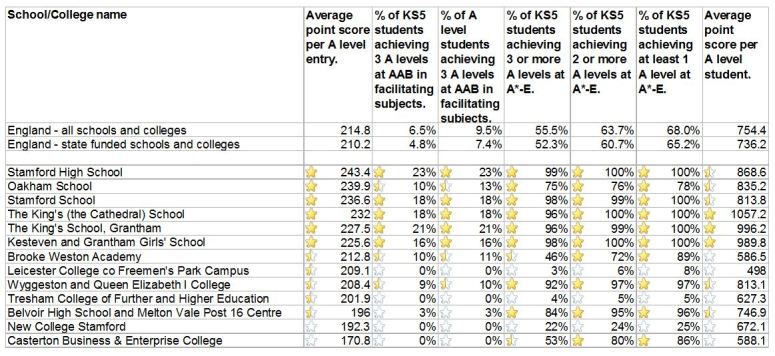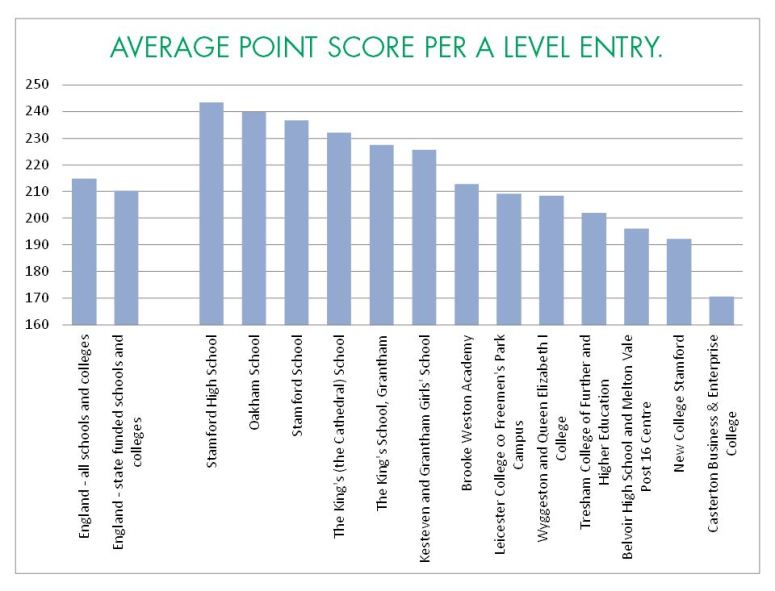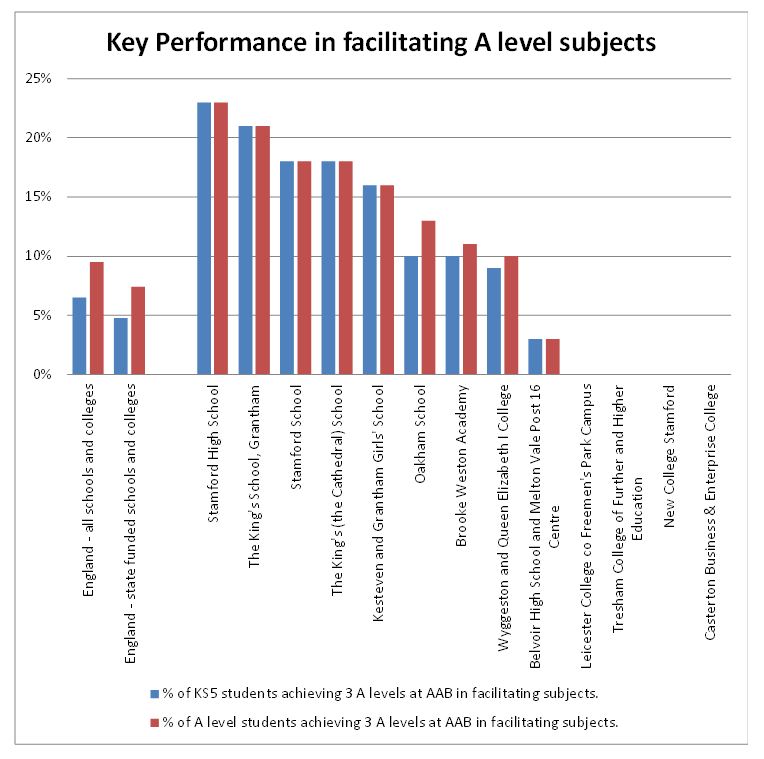The quality of performance data available regarding post-16 provision has been growing in recent years. Last year saw the first publication of meaningful data in the public domain, however the use of points scores made it difficult to interpret. My own analysis of this data for local providers and the destinations of Catmose students can be found here.
The Russell group of universities has published a significant article on the A level subjects they would like to see studied which can be viewed here. This article has proven influential with many of the highest performing providers using it to guide students; it has led to revised performance data being published by the department for education which measures how many students study the required courses to a high enough level. The performance tables can be accessed here. I have extracted the data for the providers local to Catmose students:
It should be noted that Rutland County College does not appear because it does not exist in its own right; it is managed by Casterton Business and Enterprise College which is responsible for its provision.
This table is sorted using the average points score per entry, which gives the best indicator of the average grade achieved (A = 270, B = 240, C = 210, D = 180, E = 150). Here we see that the best providers help our students to achieve at least a grade B for each qualification they sit (Stamford Endowed schools, Oakham School, King’s School). A graphical representation of this information is here:
In respect of the more academic students who are aiming for entry to a Russell group course it is also important to look at how well these providers are at achieving 3 or more A levels at AAB in facilitating subjects (Mathematics, English, Physics, Biology, Chemistry, Geography, History and Languages). This is a very high standard to achieve and it should also be noted that at Oakham School many students will study for the academically challenging IB course which will not be included in this data. This chart shows how the various providers do on this measure:
The national performance is that between 5-10% of students achieve this AAB bench mark in the facilitating subjects; it is pleasing therefore to see so many of our local providers far surpassing this benchmark. It should also be noted that further education providers will often specialise in vocational courses which would not be included in this benchmark. Those providers with no coloured bars had no students who achieved this bench mark (Leicester College, Tresham, New College Stamford and Casterton (Rutland County College).
It is also worth exploring how providers have done generally at A level performance. The following graph shows how well the different providers do at supporting students to gain at least 3 A levels at grade E; a minimum standard for entry into most universities. One should also note however that some providers may also offer alongside A levels, vocational courses which are not included in this information.
I would of course always counsel caution regarding using performance table data alone in order to judge the performance of any one of these providers. I would always advise that students visit, ask for information about performance in the subjects they are considering and ensure that the ethos and values are ones that they will share. The post-16 experience is as much about the extra-curricular as it is about the courses being studied; it is important to find out about this provision as much as it is to understand the provider’s academic success.





4 thoughts on “Post 16 Performance tables 2013”